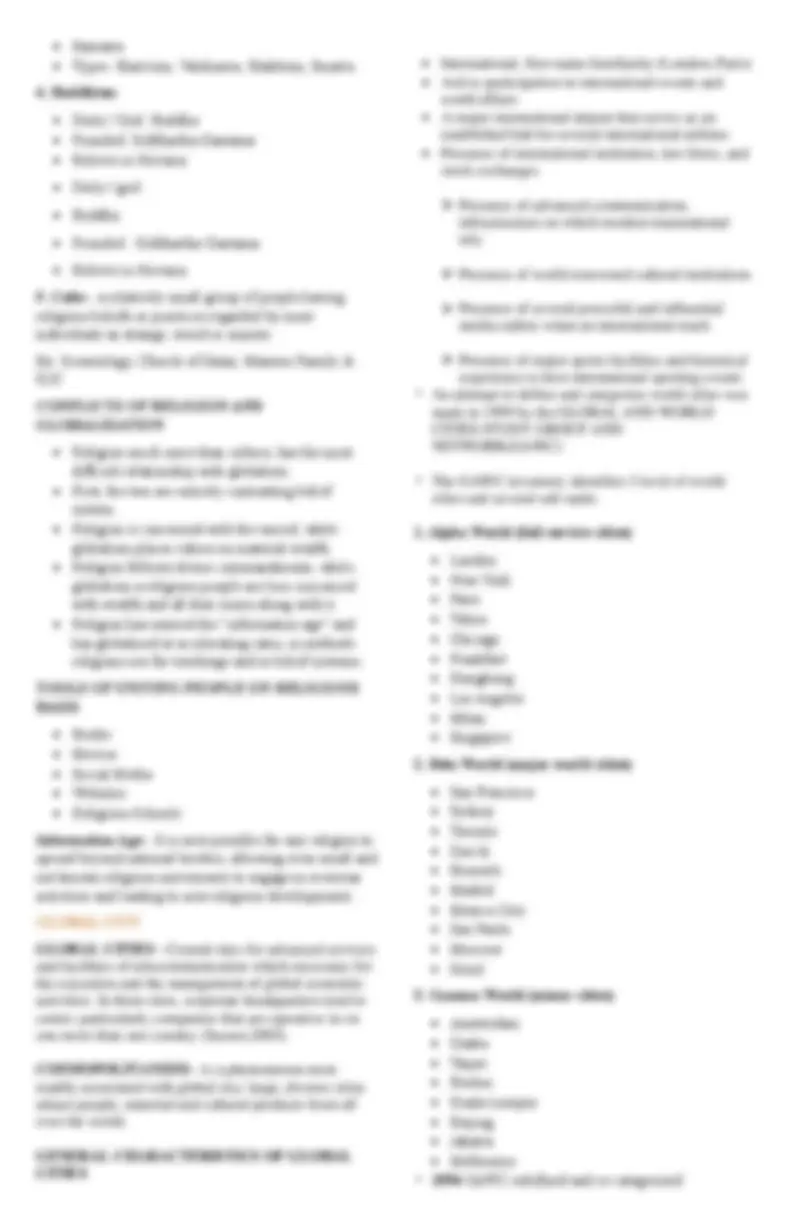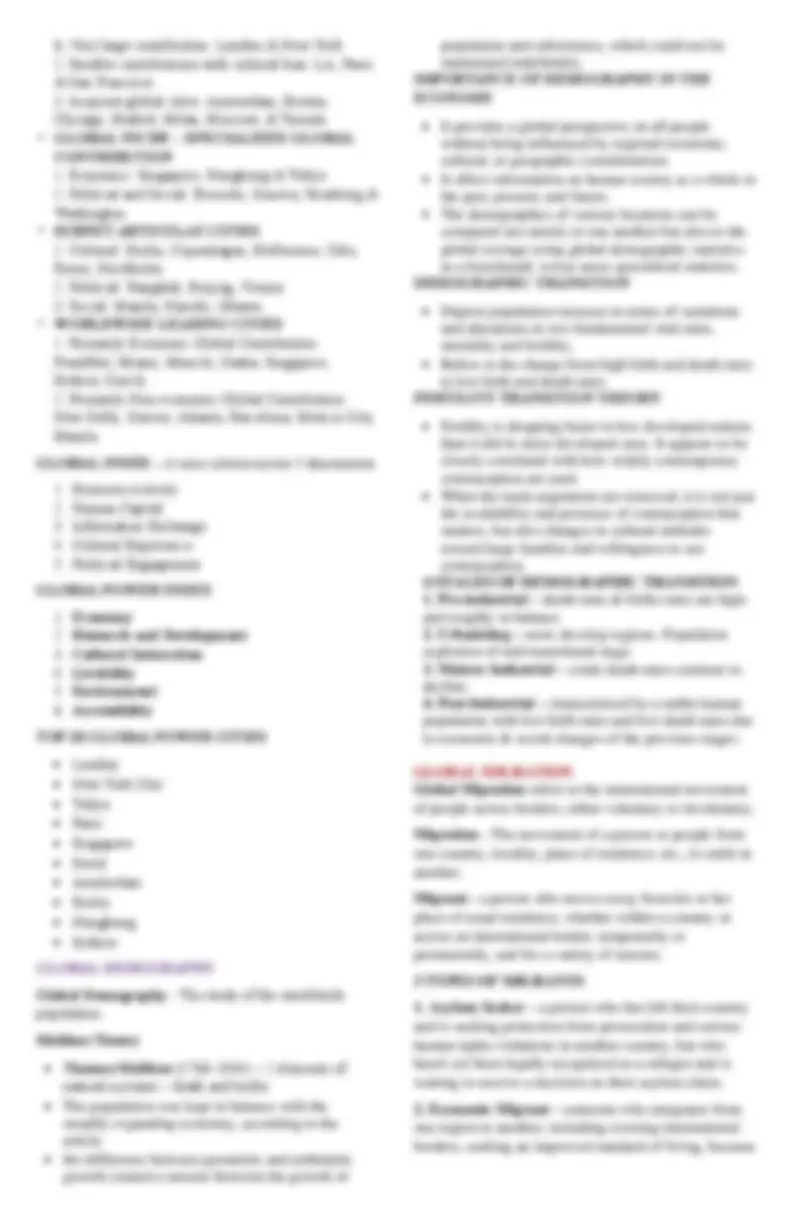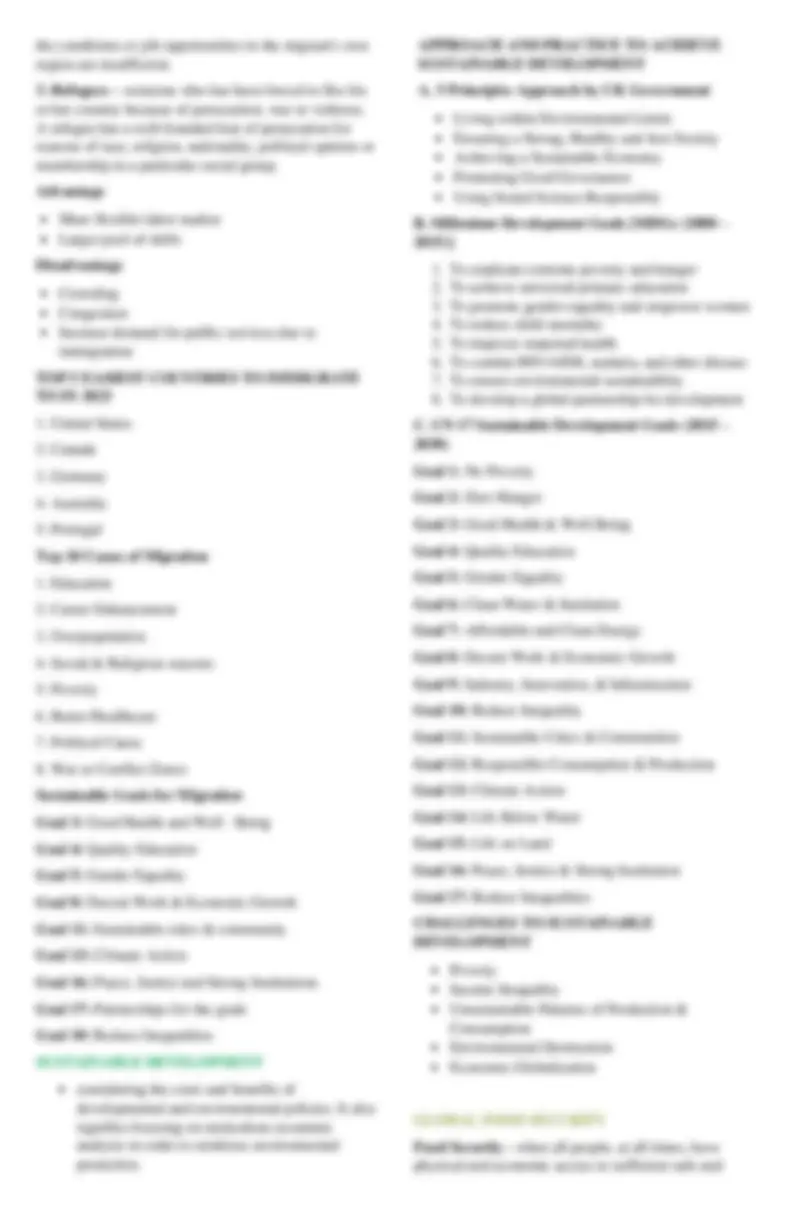





Study with the several resources on Docsity

Earn points by helping other students or get them with a premium plan


Prepare for your exams
Study with the several resources on Docsity

Earn points to download
Earn points by helping other students or get them with a premium plan
Community
Ask the community for help and clear up your study doubts
Discover the best universities in your country according to Docsity users
Free resources
Download our free guides on studying techniques, anxiety management strategies, and thesis advice from Docsity tutors
The notes are about the contemporary world, one is about religion, and the other is about the liquidity ratio.
Typology: Study notes
1 / 6

This page cannot be seen from the preview
Don't miss anything!




Global Divide – the gap between global north and global south country. Brandt Line – showing the poor and richer nations. (Willy Brandt) North – developed
Deterritorialization - is a cultural feature that blurs the lines between culture and place and thus transcends territorial boundaries 2 ASPECTS OF CULTURE
1. Material Culture – physical pieces that make up a culture. It is created by human 2. Non-Material Culture – the abstract ideas and ways of thinking that make up a culture SYMBOL CULTURE Symbol – an object, word, or action that stands for something else with no natural relationship that is cultural defined. Language Culture – important parts of any culture Values – a culture’s standard for discerning what is good and just in society. Beliefs – the tenets or convictions that people hold to be true. Cultural Norms – the unwritten rules of a society Cultural Practices – patterns of social behavior Cultural Socialization – the process through which youth learn about a culture and develop a sense of belonging to the cultural group. Cultural Exchange – globalization contributes to the exchange of cultural values of different countries. Acculturation – the process of learning and incorporating the values, beliefs, language, customs, and mannerisms of the new country. Accommodation – involves making adjustments for people to allow for differences. Integration – providing equal opportunity for participation of different groups in society Assimilation – the process whereby individuals or groups of differing ethnic heritage are absorbed into the dominant culture of a society. CULTURAL GLOBALIZATION - Migration - Globalization of Food - Interpenetrate – the exposure of members of one culture to another through direct experience &/or indirectly through the media or the experiences of others - Glocalization – used to describe a product or service that is developed and distributed globally but is also adjusted to accommodate the user or consumer in a local market. **4 DISTINCT GLOCALIZATION
1. Very large contribution: London & New York
the conditions or job opportunities in the migrant's own region are insufficient.
3. Refugees – someone who has been forced to flee his or her country because of persecution, war or violence. A refugee has a well-founded fear of persecution for reasons of race, religion, nationality, political opinion or membership in a particular social group. Advantage - More flexible labor market - Larger pool of skills Disadvantage - Crowding - Congestion - Increase demand for public services due to immigration TOP 5 EASIEST COUNTRIES TO IMMIGRATE TO IN 2023
A. 5 Principles Approach by UK Government
Goal 1:** No Poverty Goal 2: Zero Hunger Goal 3: Good Health & Well-Being Goal 4: Quality Education Goal 5: Gender Equality Goal 6: Clean Water & Sanitation Goal 7: Affordable and Clean Energy Goal 8: Decent Work & Economic Growth Goal 9: Industry, Innovation, & Infrastructure Goal 10: Reduce Inequality Goal 11: Sustainable Cities & Communities Goal 12: Responsible Consumption & Production Goal 13: Climate Action Goal 1 4: Life Below Water Goal 15: Life on Land Goal 16: Peace, Justice & Strong Institution Goal 17: Reduce Inequalities CHALLENGES TO SUSTAINABLE DEVELOPMENT